The United States Geological Survey (USGS) announced on Wednesday that at least 45 percent of tap water nationwide is likely contaminated with one or more type of per- and polyfluoroalkyl substances or PFAS, a family of harmful “forever chemicals” that do not break down in the environment and can now be widely detected in water supplies and virtually all of our bodies.
-
To celebrate Grace Lee Boggs — born on this day in 1915 — we should reflect on her concept of “living for change.” While she built and strengthened a wide array of intersectional movements throughout her 100 years of life, the challenges facing radical visionaries have only grown more immense since Grace joined the ancestors. War, colonialism, exploitation and pandemics are bound up with climate…
This post was originally published on Latest – Truthout.
-
The Dilkon Medical Center, a sprawling, $128 million facility on the Navajo Nation in Arizona, was completed a year ago. With an emergency room, pharmacy and housing for more than 100 staff members, the new hospital was cause for celebration in a community that has to travel long distances for all but the most basic health care. But there hasn’t been enough clean water to fill a large tank that…
This post was originally published on Latest – Truthout.
-
Program on Human Rights and the Global Economy (PHRGE) at Northeastern University School of Law, Data on Tap: Realizing Human Rights through Water Utility Reporting Laws (May 2023). Excerpts below. Local water utilities’ policies regarding access, pricing, payment schedules, shutoffs,…
This post was originally published on Human Rights at Home Blog.
-
This content originally appeared on Radio Free Europe/Radio Liberty and was authored by Radio Free Europe/Radio Liberty.This post was originally published on Radio Free.
-
Water rights negotiators from California, Arizona and Nevada announced earlier this month that they have reached an agreement to reduce their draw of water from the Colorado River by 3 million acre-feet between now and 2026. That translates to the amount of water that several million households use in a year, and it represents a 14 percent reduction in water usage. Slightly over half of that…
This post was originally published on Latest – Truthout.
-
This content originally appeared on Democracy Now! and was authored by Democracy Now!.This post was originally published on Radio Free.
-

We look at how a new Supreme Court ruling awards a major victory to polluters and land developers. In a 5-4 decision last week, the justices sharply limited the authority of the Environmental Protection Agency to protect and preserve wetlands under the Clean Water Act. The ruling ends protections for about half of all the wetlands in the contiguous United States, jeopardizing access to safe drinking water for millions. “That just defies science, physics, commonsense,” says Earthjustice’s Sam Sankar, who urges Congress to take action to once again protect the country’s critical water resources.
This content originally appeared on Democracy Now! and was authored by Democracy Now!.This post was originally published on Radio Free.
-
The U.S. Supreme Court has ruled in Sackett v. EPA that federal protection of wetlands encompasses only those wetlands that directly adjoin rivers, lakes and other bodies of water. This is an extremely narrow interpretation of the Clean Water Act that could expose many wetlands across the U.S. to filling and development. Under this keystone environmental law, federal agencies take the lead in…
This post was originally published on Latest – Truthout.
-
The Supreme Court issued a ruling on Thursday that severely curtails the Environmental Protection Agency’s (EPA) ability to regulate water pollution in the latest of the far right justices’ crusade against environmental regulations. In a 5-4 decision, with the three liberal justices and Brett Kavanaugh disagreeing, the Court ruled that the EPA’s jurisdiction over protecting the “waters of the…
This post was originally published on Latest – Truthout.
-
The sacred folklores of the Yoruba tradition tell the story of the time water left Earth. In the narrative, several deities from the heavenly realm come to Earth to go about the process of creation. Among these deities is Oshun, the Orisha (deities who represent the forces of nature) associated with love, fertility, compassion and sweet water. At some point, one of the deities comments that Oshun…
This post was originally published on Latest – Truthout.
-

U.S. President Joe Biden on Thursday vetoed legislation pass by congressional Republicans and corporate Democrats to stop the federal government from protecting public health and the planet, blocking a resolution passed by both chambers last month to gut water protections.
Democratic Sens. Catherine Cortez Masto (Nev.), Joe Manchin (W.Va.), Jacky Rosen (Nev.), and Jon Tester (Mont.) joined former Democrat Sen. Kyrsten Sinema (I-Ariz.) and every Republican in the Senate to pass H.J. Res. 27 last week, following the bill’s passage in the GOP-controlled U.S. House.
The legislation rejected the Environmental Protection Agency’s definition of the “waters of the United States” (WOTUS) that are protected under the Clean Water Act, as “traditional navigable waters, the territorial seas, interstate waters, as well as upstream water resources that significantly affect those waters.”
The regulation, introduced in December, is expected to restore protections for millions of marshes and other waterways after the Trump administration wiped out those regulations, permitting increased industrial pollution in nearly half of all wetlands across the country.
Biden’s veto, said the president will protect Americans’ right to clean water.
\u201cI just vetoed a bill that attempted to block our Administration from protecting our nation’s waterways \u2013 a resource millions of Americans depend on \u2013 from destruction and pollution.\n \nLet me be clear: Every American has a right to clean water.\n \nThis veto protects that right.\u201d— President Biden (@President Biden) 1680809643Republicans would need a two-thirds majority to override Biden’s veto—a level of support they’re unlikely to get.
Senate Minority Leader Mitch McConnell (R-Ky.) on Wednesday claimed that a presidential veto would allow EPA officials to regulate pollution “way outside the authority that Congress actually provided in the Clean Water Act,” and expressed hope that the U.S. Supreme Court will ultimately rule that the government cannot protect navigable waters from industrial pollution.
The veto is the second of Biden’s presidency. Last month he vetoed a resolution that attempted to overturn a rule allowing retirement fund managers to consider the impact of their investments on the climate and planet.
This post was originally published on Common Dreams.
-

The Biden administration on Friday took its latest step to hold Norfolk Southern accountable for the disaster continuing to unfold in East Palestine, Ohio and the surrounding area, filing a lawsuit against the rail company for sending toxic chemicals into the environment.
The U.S. Department of Justice (DOJ) sued the company under the Clean Air Act, accusing it of “unlawfully polluting the nation’s waterways” and calling on Norfolk Southern “to ensure it pays the full cost of the environmental cleanup.”
“When a Norfolk Southern train derailed last month in East Palestine, Ohio, it released toxins into the air, soil, and water, endangering the health and safety of people in surrounding communities,” said Attorney General Merrick Garland. “With this complaint, the Justice Department and the [Environmental Protection Agency] are acting to pursue justice for the residents of East Palestine and ensure that Norfolk Southern carries the financial burden for the harm it has caused and continues to inflict on the community.”
The lawsuit comes almost two months after a train carrying chemicals including vinyl chloride derailed in East Palestine, spilling chemicals into local waterways and ultimately the Ohio River, which provides drinking water for more than five million people.
“Whatever it takes to make East Palestine whole, Norfolk Southern needs to pay—and it’s not enough to take their word for it.”
Officials began a controlled release of vinyl chloride to prevent an explosion, a process that sent chemicals including hydrogen chloride and phosgene into the environment. Those chemicals have been known to cause symptoms including headaches, vomiting, and rashes. Earlier this month, data showed that local levels of dioxin, a carcinogen, were hundreds of times higher than the threshold for cancer risk, according to federal scientists.
Norfolk Southern has removed nine million gallons of contaminated wastewater from the site and hauled it to storage sites in states including Texas and Michigan. Earlier this week, officials in Baltimore blocked a shipment of wastewater to a treatment plant there, with one city council member noting that “too often cities with high rates of concentrated poverty and environmental degradation are asked to shoulder the burden for corporate malfeasance.”
Government officials say toxic levels of contamination have not been detected in the air or water in East Palestine, but a poll by federal, state, and local authorities earlier this month found that 74% of town residents had experienced headaches following the derailment and controlled release, and 52% had experienced rashes or other skin issues.
On Friday, CNN reported that investigators with the U.S. Centers for Disease Control and Prevention (CDC) experienced symptoms including sore throat, headache, coughing, and nausea while they were in East Palestine assessing public health risks.
By filing its lawsuit, said Assistant Attorney General Todd Kim of the DOJ’s Environment and Natural Resources Division, the Biden administration is “demanding accountability from Norfolk Southern for the harm this event has caused.”
“We will tirelessly pursue justice for the people living in and near East Palestine, who like all Americans deserve clean air, clean water, and a safe community for their children,” said Kim.
In February, the EPA ordered Norfolk Southern to take full responsibility for the cleanup work, issuing a legally binding directive. It also demanded that the company attend all public meetings regarding the disaster, after officials refused to meet with residents following the crash.
Ohio filed a lawsuit against the company earlier this month, demanding that it pay for soil and water monitoring in the coming years as well as paying environmental damage and cleanup costs.
U.S. Sen. Sherrod Brown (D-Ohio)—a key sponsor of multiple recent railway safety bills—applauded the Biden administration for “following Ohio’s lead and holding Norfolk Southern accountable to the full extent of the law.”
\u201cWhatever it takes to make East Palestine whole, Norfolk Southern needs to pay \u2014 and it\u2019s not enough to take their word for it. \n\nGlad to see @TheJusticeDept following Ohio\u2019s lead and holding Norfolk Southern accountable to the full extent of the law.\nhttps://t.co/4x2x0oA1LP\u201d— Sherrod Brown (@Sherrod Brown) 1680274800The latest lawsuit against Norfolk Southern “should further serve as a wake-up call” to the rail industry, said Robert Guy, Illinois state director for the International Association of Sheet Metal, Air, Rail and Transportation Workers-Transportation Division.
\u201cThis should further serve as a wake-up call to all Class I\u2019s and their love affair with PSR. They must scale back train length, especially those that haul coal, iron-ore and hazardous materials! https://t.co/3SzCfPg7DW\u201d— Robert W Guy III (@Robert W Guy III) 1680270208Norfolk Southern and other rail companies have long lobbied for lax regulations and pushed workers to abide by a strict scheduling system that rail unions say places profits over safety.
This post was originally published on Common Dreams.
-
The CSIRO will develop a world-first ground to space water quality monitoring system with dozens of government, industry and research collaborators under its next science mission. The mission – the latest in a handful of the CSIRO’s large scale scientific and collaborative research initiatives – will use Australian made ground and satellite sensors and big…
The post Locally-made satellite sensors and AI in CSIRO’s water mission appeared first on InnovationAus.com.
This post was originally published on InnovationAus.com.
-

Xcel Energy in late November told Minnesota and federal officials about a leak of 400,000 gallons of water contaminated with radioactive tritium at its Monticello nuclear power plant, but it wasn’t until Thursday that the incident and ongoing cleanup effort were made public.
In a statement, Xcel said Thursday that it “took swift action to contain the leak to the plant site, which poses no health and safety risk to the local community or the environment.”
“Ongoing monitoring from over two dozen on-site monitoring wells confirms that the leaked water is fully contained on-site and has not been detected beyond the facility or in any local drinking water,” the company added.
The Monticello plant, adjacent to the Mississippi River, is roughly 35 miles northwest of Minneapolis.
Asked why it didn’t notify the public sooner, the Minneapolis-based utility giant said: “We understand the importance of quickly informing the communities we serve if a situation poses an immediate threat to health and safety. In this case, there was no such threat.”
But Excel wasn’t the only entity with knowledge of the situation. The company said it alerted the U.S. Nuclear Regulatory Commission (NRC) and state authorities on November 22, the day the leak was confirmed.
According to The Star Tribune: “A high level of tritium in groundwater was reported to the Nuclear Regulatory Commission when first discovered, which published the ‘nonemergency’ report in its public list of nuclear events the next day. The listing said the source of the tritium was being investigated.”
As Minnesota Public Radio explained, “The NRC’s November public notice was not in a news release” and was only visible “online at the bottom of a list of ‘non-emergency’ event notification reports.”
Asked why they waited four months to inform residents, state regulators who are monitoring the cleanup said they were waiting for more information.
“We knew there was a presence of tritium in one monitoring well, however Xcel had not yet identified the source of the leak and its location,” Minnesota Pollution Control Agency (MPCA) spokesperson Michael Rafferty said Thursday.
The source of the leak—a broken pipe connecting two buildings—was detected on December 19 and quickly patched.
“Now that we have all the information about where the leak occurred, how much was released into groundwater, and that contaminated groundwater had moved beyond the original location, we are sharing this information,” said Rafferty.
None— (@)Dan Huff, assistant commissioner of the Minnesota Department of Health (MDH), said, “If at any time someone’s health is at risk, we would notify folks immediately.” However, he continued, “this is a contained site underneath the Xcel plant and it has not threatened any Minnesotans’ health.”
Echoing Xcel and MDH officials, MPCA said in a statement: “The leak has been stopped and has not reached the Mississippi River or contaminated drinking water sources. There is no evidence at this time to indicate a risk to any drinking water wells in the vicinity of the plant.”
Kirk Koudelka, MPCA assistant commissioner for land and strategic initiatives, declared that “our top priority is protecting residents and the environment.”
“The MPCA is working closely with other state agencies to oversee Xcel Energy’s monitoring data and cleanup activities,” said Koudelka. “We are working to ensure this cleanup is concluded as thoroughly as possible with minimal or no risk to drinking water supplies.”
Since reporting the leak, Xcel has been pumping, storing, and processing contaminated groundwater, which “contains tritium levels below federal thresholds,” according to The Associated Press.
As the news outlet reported:
Tritium is a radioactive isotope of hydrogen that occurs naturally in the environment and is a common by-product of nuclear plant operations. It emits a weak form of beta radiation that does not travel very far and cannot penetrate human skin, according to the NRC. A person who drank water from a spill would get only a low dose, the NRC says.
The NRC says tritium spills happen from time to time at nuclear plants, but that it has repeatedly determined that they’ve either remained limited to the plant property or involved such low offsite levels that they didn’t affect public health or safety. Xcel reported a small tritium leak at Monticello in 2009.
Xcel said it has recovered about 25% of the spilled tritium so far, that recovery efforts will continue and that it will install a permanent solution this spring.“Xcel Energy is considering building above-ground storage tanks to store the contaminated water it recovers, and is considering options for the treatment, reuse, or final disposal of the collected tritium and water,” AP noted. “State regulators will review the options the company selects.”
As MPR reported, news of the leak “comes as Xcel is asking federal regulators to extend Monticello’s operating license through 2050—when the plant will be nearly 80 years old.”
The company says that doing so “is critical to meeting a new state law mandating fully carbon-free electricity by 2040,” The Star Tribune reported.
But on social media, commentators pointed out that such pollution “doesn’t happen with solar and wind.”
“Building more nuclear power plants is a bad solution to the climate crisis,” one user from Minnesota tweeted. “A good solution is more wind turbines and solar panels.”
This post was originally published on Common Dreams.
-
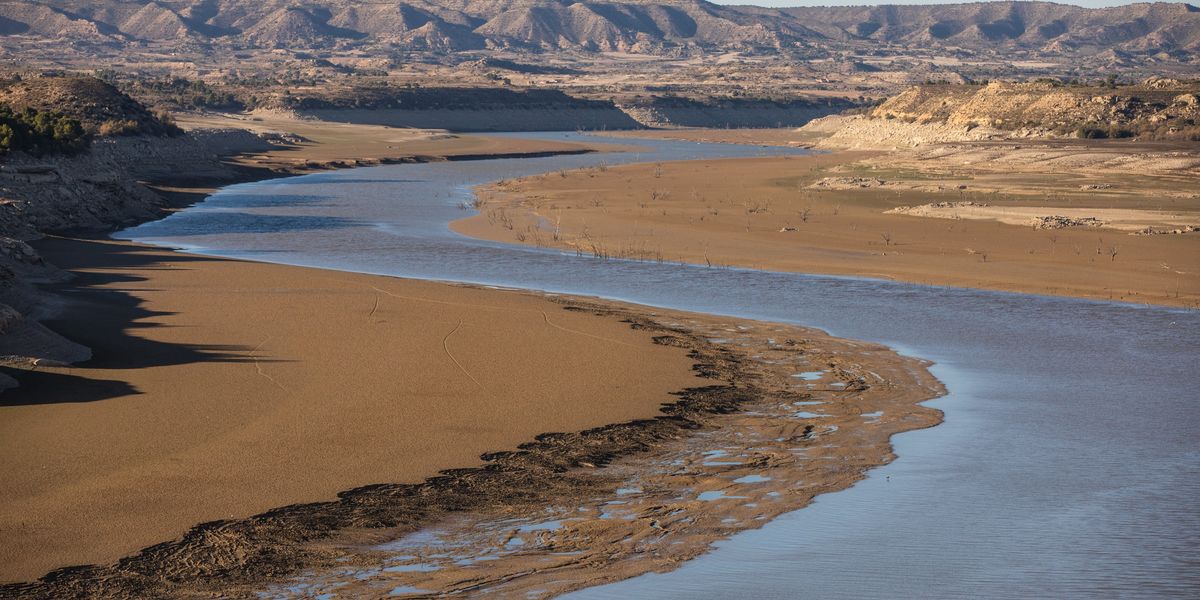
Ahead of the first United Nations conference on water in more than four decades, experts from the Global Commission on the Economics of Water released a landmark report Friday to warn the international community that the world is “heading for massive collective failure” in the management of the planet’s water supply and demand that governments treat water as a “global common good.”
Policymakers’ failure to ensure equal access to water, protect freshwater ecosystems, and recognize that communities and countries are interdependent when it comes to the global water cycle has resulted in two billion people lacking a safe drinking supply and “the prospect of a 40% shortfall in freshwater supply by 2030, with severe shortages in water-constrained regions,” according to the report.
The 32-page document, titled Turning the Tide: A Call to Collective Action, “marks the first time the global water system has been scrutinized comprehensively and its value to countries—and the risks to their prosperity if water is neglected—laid out in clear terms.”
In a video released ahead of the report, co-author Johan Rockström, who directs the Postdam Institute for Climate Impact Research in Germany, noted that the expected freshwater shortage is partially due to the fact that “we’re changing the very source of freshwater precipitation” as human activities including fossil fuel extraction drive planetary heating.
None— (@)“However, water is not just a casualty but also a driver of the climate crisis,” reads the report. “Extreme water events cause an immediate loss of carbon uptake in nature. Droughts lead to fires and massive loss of biomass, carbon, and biodiversity. The loss of wetlands is depleting the planet’s greatest carbon store, while the drop in soil moisture is reducing the terrestrial and forest ecosystem’s ability to sequester carbon.”
“We will fail on climate change if we fail on water,” the report continues.
Humans’ misuse of water, pollution of water, and changes to the hydrological cycle amount to “a triple crisis,” Rockström told The Guardian, which must be solved by recognizing water as a “global commons.”
According to the report, the majority of countries depend on the evaporation of water from neighboring countries for about half of their water supply. This “green” water is held in soils and transpired from forests and other ecosystems.
Countries “are not only interconnected by transboundary blue water flows but also through green water, i.e., atmospheric green water flows of water vapor, flows which… extend far beyond traditional watershed boundaries,” the report states.
The report points to regressive and inefficient use of water subsidies, which “typically favor the well-off and corporations more than the poor,” and $500 billion annually in agriculture subsidies, the majority of which “have been assessed to be price-distorting” and which can fuel excessive water consumption.
“Our economic systems by and large fail to account for the value of water,” reads the report. “This leads to the excessive and unsustainable use of finite freshwater resources and a corresponding lack of access for the poor and vulnerable in many places. We must systematically incorporate the values of water into decision-making, so it can be used far more efficiently in every sector, more equitably in every population and more sustainably, both locally and globally.”
The authors recommended seven steps that policymakers must take to avoid a water shortage by the end of the decade, including:
- Manage water supplies as a common good by recognizing that water is critical to food security and all sustainable development goals;
- Mobilize multiple stakeholders—public, private, civil society, and local community—to scale up investments in water through new
modalities of public-private partnerships; - Cease underpricing water and target support for the poor;
- Phase out water and agriculture subsidies that “generate excessive water consumption and other environmentally damaging practices”;
- Establish Just Water Partnerships to enable investments in water access, resilience and sustainability in low- and middle-income countries;
- Move forward on steps that can be taken this decade to “move the needle significantly,” including fortifying depleted freshwater systems, recycling industrial and urban wastewater, reusing water in the production of critical materials, and shifting agricultural systems to include less water-intensive crops and drought-resistant farming; and
- Reshape multilateral governance of water by incorporating new water standards into trade agreements and prioritizing equality in water decision-making.
The collective call to action, said the authors, “will enable us to convert water from a growing global tragedy to immense global opportunity: to bring a new direction to policies and collaboration, innovation and investment, and finance, so that we conserve and use water more efficiently, and ensure that everyone has access to the water they need.”The Global Commission on the Economics of Water will present its findings at the U.N. Water Conference on March 22.
This post was originally published on Common Dreams.
-
Ever so rarely, the human species can reach accord and agreement on some topic seemingly contentious and divergent. Such occasions tend to be rarer than hen’s teeth, but the UN High Seas Treaty was one of them. It took over two decades of agonising, stuttering negotiations to draft an agreement and went someway to suggest that the “common heritage of mankind”, a concept pioneered in the 1960s, has retained some force.
Debates about the sea have rarely lost their sting. The Dutch legal scholar Hugo Grotius, in his 1609 work Mare Liberum (The Free Sea), laboured over such concepts as freedom of navigation and trade (commeandi commercandique libertas), terms that have come to mean as much assertions of power as affirmations of international legal relations.
The thrust of his argument was directed against the Portuguese claim of exclusive access to the East Indies, but along the way, statements abound about the nature of the sea itself, including its resources. While land could be possessed and transformed by human labour and private use, the transient, ever-changing sea could not. It is a view echoed in the work of John Locke, who called the ocean “that great and still remaining Common of Mankind”.
With empires and states tumbling over each other in those historical challenges posed by trade and navigation, thoughts turned to a relevant treaty that would govern the seas. While there was a general acceptance by the end of the 18th century that states had sovereignty over their territorial sea to the limit of three miles, interest in codifying the laws on oceans was sufficient for the UN International Law Commission to begin work on the subject in 1949.
It was a project that occupied the minds, time and resources of nation states and their officials for decades, eventually yielding the UN Convention on the Law of the Sea. Brought into existence in 1982, it came into effect in 1995. UNCLOS served to define maritime zones, including such concepts as the territorial sea, the contiguous zone, the exclusive economic zone, the continental shelf, the high sea, the international seabed area and archipelagic waters.
What was missing from the document was a deeper focus on the high sea itself, lying beyond the “exclusive economic zones” of states (200 nautical miles from shore) and, by virtue of that, a regulatory framework regarding protection and use. Over the years, environmental concerns including climate change, biodiversity loss and pollution became paramount. Then came those areas of exploration, exploitation and plunder: marine genetic resources and deep-sea mining.
The High Seas Treaty, in its agreed form reached by delegates of the Intergovernmental Conference on Marine Biodiversity and Areas Beyond National Jurisdiction, retains the object of protecting 30% of the world’s oceans by 2030. The goal is in line with the Kunming-Montreal Global Biodiversity Framework (GBF) which was adopted at the conclusion of Biodiversity COP15 in December last year. This, it is at least hoped, will partially address what has been laboriously described as a “biodiversity governance gap”, especially as applicable to the high seas. (To date, only 1.2% of the waters in the high seas is the subject of protection.)
The Treaty promises to limit the extent of a number of rapacious activities: fishing, busy shipping lane routes and exploration activities that include that perennially contentious practice of deep-sea mining. As the Jamaica-based International Seabed Authority explained to the BBC, “any future activity in the deep seabed will be subject to strict environmental regulations and oversight to ensure that they are carried out sustainably and responsibly.”
Laura Meller of Greenpeace Nordic glowed with optimism at the outcome. “We praise countries for seeking compromises, putting aside differences and delivering a Treaty that will let us protect the oceans, build our resilience to climate change and safeguard the lives and livelihoods of billions of people.” There were also cheery statements from the UN Secretary General António Guterres about the triumph of multilateralism, and the confident assertion from the Singaporean Conference president Ambassador Rena Lee, that the ship had “reached the shore.”
The text, however, leaves lingering tensions to simmer. The language, by its insistence on the high seas, suggests the principle of “Freedom of the High Seas” having more truck than the “Common Heritage of Humankind”. (The ghost of Grotius lingers.) How the larger powers seek to negotiate this in the context of gains and profits arising out of marine genetic resources, including any mechanism of sharing, will be telling.
The text also lacks a clear definition of fish, fishing and fishing-related activities, very much the outcome of intense lobbying by fishing interests. Given the treaty’s link to other instruments, such as the Agreement on Port State Measures, which defines fish as “all species of living marine resources, whether processed or not”, the risk of excluding living marine resources from the regulatory mechanism is genuine enough.
Then comes the issue of ratification and implementation. Signatures may be penned, and commitments made, but nation states can be famously lethargic in implementing what they promise and stubborn on points of interpretation. Lethargy and disputatiousness will do little to stem the threat to marine species, complex systems of aquatic ecology, and disappearing island states.
The post The Ghost of Hugo Grotius: The UN High Seas Treaty first appeared on Dissident Voice.This post was originally published on Dissident Voice.
-
Philipsburg, Montana — On a recent day in this 19th-century mining town turned tourist hot spot, students made their way into the Granite High School lobby and past a new filtered water bottle fill station. Water samples taken from the drinking fountain the station replaced had a lead concentration of 10 parts per billion — twice Montana’s legal limit for schools of 5 parts per billion for the…
This post was originally published on Latest – Truthout.
-

Thousands of people in East Palestine, Ohio have been assured by the state Environmental Protection Agency and Republican Gov. Mike DeWine that the town’s municipal water has not been contaminated by the train derailment that took place in the town earlier this month, but the only publicly available data comes from testing that was funded by the company behind the crash.
As HuffPost reported late Friday, the Dallas-based consulting firm AECOM contracted with Norfolk Southern, which operated the 150-car train that was carrying the toxic chemical vinyl chloride, to sample water from five wells and from treated municipal water.
DeWine announced on Wednesday that those tests “showed no evidence of contamination,” but as one aquatic ecologist told HuffPost, the lab report indicates several testing errors that violated federal standards and should have disqualified the results.
“Their results that claim there were no contaminants is not a reliable finding,” Sam Bickley of the advocacy coalition Virginia Scientist-Community Interface, told the outlet. “I find this extremely concerning because these results would NOT be used in most scientific applications because the samples were not preserved properly, and this is the same data they are now relying on to say that the drinking water is not contaminated.”
The testing was done on February 10, seven days after the train derailed and authorities began a controlled release of the vinyl chloride, a carcinogen, to avoid an explosion. The burning of vinyl chloride can send hydrogen chloride and phosgene into the environment. The former chemical has been known to cause throat, eye, and skin irritation and the latter can cause vomiting and difficulty breathing.
An environmental testing lab analyzed the samples on February 13 and 15, according to HuffPost, and scientists who examined that analysis found it to be flawed. As the outlet reported:
Five of the six collected samples had pH, or acidity, levels that exceeded the 2 pH limit allowed under the EPA method listed in the analysis for detecting volatile organic compounds, rendering them improperly preserved. One sample also “contained a large air bubble in its vial, while the EPA method requires that sample bottles should not have any trapped air bubbles when sealed,” the report states. David Erickson, a hydrogeologist and the founder of Water & Environmental Technologies, an environmental consulting firm in Montana, called the sampling “sloppy” and “amateur.”
The Biden administration said in a press call Friday that Norfolk Southern has not been solely behind the testing that’s been conducted so far, with a spokesperson telling reporters, “It’s been with the Columbiana County Health Department, collecting samples along with Norfolk Southern and sending those as split samples to two different labs for verification.”
The state EPA, however, did not receive the health department’s results until after DeWine declared the water safe based on AECOM’s flawed testing.
The lab report shows low levels of the chemical dibutyl phthalate, which is not linked to cancer in humans but can cause headaches, nausea, dizziness, irritation of the eyes and throat, and seizures.
Some of the residents who were told days after the derailment that they could safely return to East Palestine have reported symptoms including headaches, nausea, dizziness, and shortness of breath.
Reuters reported Friday that many East Palestine do not trust state and local authorities, and have been purchasing large quantities of bottled water as they determine whether it’s safe to stay in the town.
\u201c’The people in town are afraid’: Deb Blair, a cashier in East Palestine, Ohio, says bottled water has been flying off the shelves after a train derailed and spilled toxic chemicals, causing concern about water safety https://t.co/bvTi7f2mG3\u201d— Reuters (@Reuters) 1676700600“We’re not getting any truth,” said Ted Murphy, who is now planning to leave the town out of safety concerns just seven months after moving to his current home. “They’re not going to own up to what’s going [into the water] until they are forced to.”
The U.S. EPA has not conducted any sampling of the municipal water. On Thursday, Democratic Pennsylvania Gov. Josh Shapiro ordered independent testing of water in local communities. East Palestine is just over the Ohio-Pennsylvania border.
The state EPA told HuffPost that water testing is ongoing.
On Friday, U.S. Senate Commerce Committee Chair Maria Cantwell (D-Wash.) announced the panel would launch an investigation into the handling of hazardous materials. Railroad workers have been raising alarm in recent years about their employers’ loosening of safety standards in the interest of maximizing profits, and say the reduced safety measures were to blame for the crash.
This post was originally published on Common Dreams.
-
Residents of East Palestine, Ohio are voicing alarm and mistrust of officials after a 150-car train carrying hazardous materials — including vinyl chloride — crashed in their small town, prompting emergency evacuations and a “controlled release” of chemicals into the air to prevent a catastrophic explosion. Norfolk Southern, the company that owns the derailed train, has insisted that public health…
This post was originally published on Latest – Truthout.
-
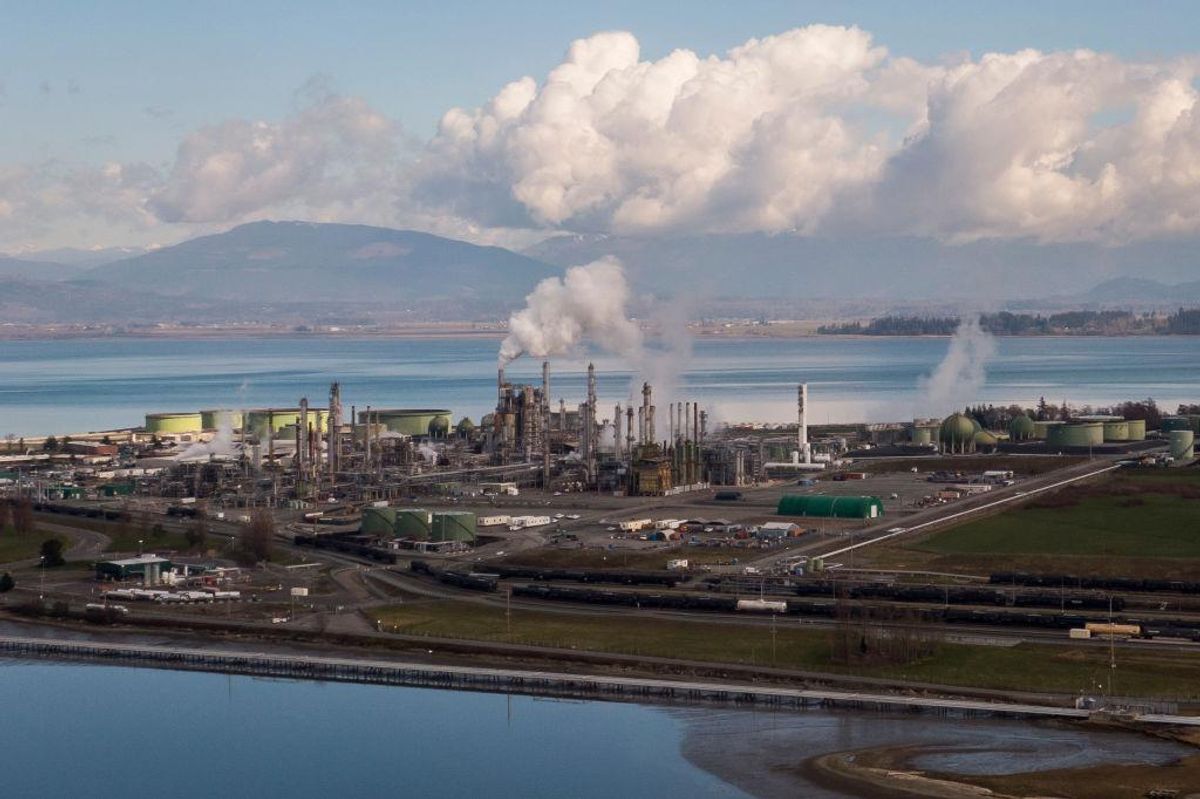
The U.S. Environmental Protection Agency’s newly released plan for regulating wastewater pollution, including discharges of toxic “forever chemicals,” is far too muted and sluggish, a progressive advocacy group warned Friday.
The Environmental Working Group (EWG) detailed how the EPA’s long-awaited Effluent Guidelines Program Plan 15 postpones sorely needed action to rein in widespread contamination from per- and polyfluoroalkyl substances (PFAS). PFAS are a class of hazardous synthetic compounds widely called forever chemicals because they persist in people’s bodies and the environment for years on end.
“We are deeply concerned that the EPA is punting on restrictions for PFAS polluting industries like electronics manufacturers, leather tanners, paint formulators, and plastics molders,” said Melanie Benesh, EWG’s vice president of government affairs. “We are also alarmed that the EPA’s proposed restrictions on some of the most serious PFAS polluters—chemical manufacturers and metal finishers—are also getting delayed, with no timeline for when those limits will be final, if ever.”
According to EWG, the EPA’s new plan “falls short” of its pledge, made in the agency’s 2021 PFAS Strategic Roadmap, to “get upstream” of the forever chemicals problem.
As the watchdog summarized:
The EPA confirmed that by spring 2024—nine months later than previously scheduled—it will release a draft regulation for manufacturers of PFAS or those that create mixtures of PFAS. The agency will do the same for metal finishers and electroplaters by the end of 2024, a delay of six months. The EPA did not announce when final rules will be available for these industries.
The agency will also begin regulating PFAS releases from landfills but did not provide a timeline for a final rule.
For all other industrial categories the EPA considered for PFAS wastewater limitation guidelines, the new plan includes more studies and monitoring, likely delaying restrictions on these sources indefinitely.“Polluters have gotten a free pass for far too long to contaminate thousands of communities. Now they need aggressive action from the EPA to stop PFAS at the source,” Benesh said. “But the EPA’s plan lacks the urgency those communities rightfully expect.”
“Although it’s a good thing the EPA is committing to address PFAS discharges from landfills—a source of pollution that disproportionately affects vulnerable communities—it’s also frustratingly unclear from EPA’s plan when, if ever, those limits will materialize,” said Benesh.
“Given the glacial pace of change in the EPA’s plan,” she added, “states should not wait for the EPA to act on PFAS.”
“Polluters have gotten a free pass for far too long to contaminate thousands of communities. Now they need aggressive action from the EPA to stop PFAS at the source.”
Scientists have linked long-term PFAS exposure to numerous adverse health outcomes, including cancer, reproductive and developmental harms, immune system damage, and other negative effects.
A peer-reviewed 2020 study estimated that more than 200 million people in the U.S. could have unsafe levels of PFAS in their drinking water. The deadly substances—used in dozens of everyday household products, including ostensibly “green” and “nontoxic” children’s items, as well as firefighting foam—have been detected in the blood of 97% of Americans and in 100% of breast milk samples. Such findings stem from independent analyses because the EPA relies on inadequate testing methods.
Researchers have identified more than 57,000 sites across the U.S. contaminated by PFAS. Solid waste landfills, wastewater treatment plants, electroplaters and metal finishers, petroleum refiners, current or former military facilities, and airports are the most common sources of forever chemical pollution. Industrial discharges of PFAS are a key reason why 83% of U.S. waterways contain forever chemicals, tainting fish nationwide.
Some congressional Democrats are “trying to force the EPA to address PFAS more quickly,” EWG noted.
The Clean Water Standards for PFAS Act, introduced in 2022 by Rep. Chris Pappas (D-N.H.) and Sen. Kirsten Gillibrand (D-N.Y.), would require the EPA to establish PFAS wastewater limitation guidelines and water standards for PFAS in nine distinct industry categories by the end of 2026.
This post was originally published on Common Dreams.
-
The Bipartisan Infrastructure Law, signed by President Biden last November, is pouring billions of dollars into an upgrade of the country’s aging water infrastructure. But a new study has found that white communities have been favored in distribution of the funds, something that’s controlled by individual states. The majority of the $55 billion allocated to water infrastructure will be distributed…
This post was originally published on Latest – Truthout.
-
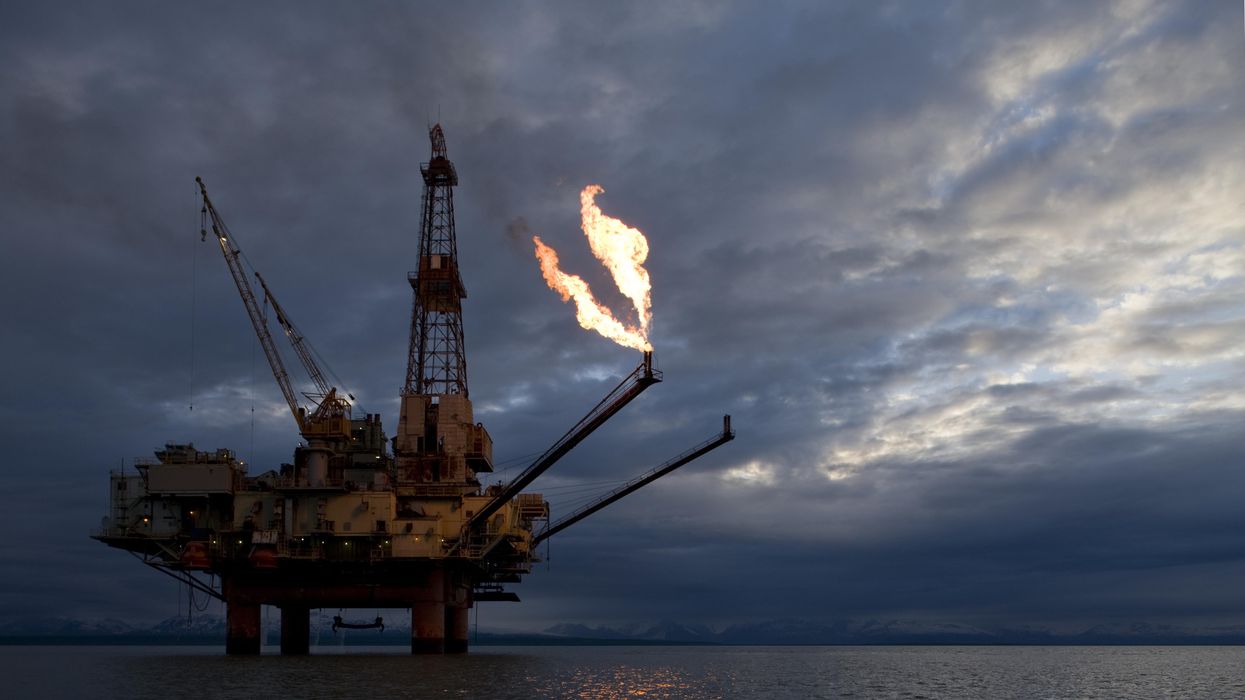
More than 300 environmental and Indigenous rights groups said Wednesday that the Biden administration must take a number of concrete actions to protect the nation’s public lands and waters from fossil fuel industry exploitation and bring U.S. policy into line with climate science—and the president’s own campaign pledges.
In a letter to U.S. Secretary of the Interior Deb Haaland, the climate coalition noted that President Joe Biden “made a bold promise to ban new oil and gas leasing on public lands and waters, and within days of taking office issued his Executive Order on Tackling the Climate Crisis at Home and Abroad.”
“However, since then, the Biden administration and Interior’s leadership has fallen short Interior issued new permits to drill at a rate faster than the Trump administration during Biden’s first year in office,” the letter continues. “The Bureau of Land Management and Bureau of Ocean Energy Management pushed forward with new oil and gas lease sales, including a sale in the Gulf of Mexico that was vacated by a federal court for a faulty environmental review. And Interior’s final report on the leasing program failed to take into account climate impacts from extraction on public lands and waters.”
The groups also pointed to the Biden administration’s recent decision to go ahead with a major oil and gas lease sale off Alaska’s coast, ignoring warnings that the auction would imperil marine life, pollute coastal communities, and contribute to the nation’s rising carbon emissions.
“The climate science is clear: Several analyses show that climate pollution from the world’s already-producing fossil fuel fields, if fully developed, will overshoot the targets in the Paris Climate Agreement and push warming past 1.5 degrees Celsius,” the letter states. “Avoiding such warming requires ending new investment in fossil fuel projects and phasing out production to keep as much as 40% of already-developed fields in the ground.”
In a press release, the coalition outlines nine steps the Biden administration can and must take to manage “public lands and waters in a manner consistent with climate science”:
- Phase out oil and gas production on public lands and waters to near zero by 2035.
- Defend and strengthen the National Environmental Policy Act (NEPA).
- Establish guardrails on the leasing program to protect the climate, public lands, oceans, and communities.
- Issue a five-year plan with no new leases.
- Stop authorizing new exploration, development, and drilling permits in the Gulf of Mexico and Alaska until there is a proper analysis of climate damage.
- Stop issuing new permits to drill on public lands until there is a proper analysis of climate damage and a climate screen
- Manage public lands for climate solutions.
- Halt climate-destroying projects in the Arctic (ex: Willow, Peregrine).
- Protect climate and communities from near-term offshore lease sales (ex: Cook Inlet, Gulf of Mexico).
“As the dire impacts of climate disruption escalate, President Biden must keep his campaign promise to end oil and gas leasing on public lands,” said Osprey Orielle Lake, executive director of the Women’s Earth and Climate Action Network, a signatory of the new letter.“Indigenous and frontline communities continue to bear the brunt of the climate crisis, and we are calling for the administration to end fossil fuel expansion and implement a just transition,” Lake continued. “There is simply no time to lose and our public lands need to be a part of the solution.”
Recent research estimates that fossil fuel extraction on public lands and waters has accounted for nearly a quarter of all U.S. greenhouse gas pollution since 2005, making the end of such development critical to efforts to bring the country’s emissions into line with its domestic and international commitments.
“More drilling and more fracking is just a recipe for more climate disaster,” Jeremy Nichols, climate and energy program director for WildEarth Guardians, said in a statement Wednesday. “For our future, President Biden needs to get real, start keeping oil and gas in the ground, and truly drive meaningful action to save our climate.”
This post was originally published on Common Dreams.
-
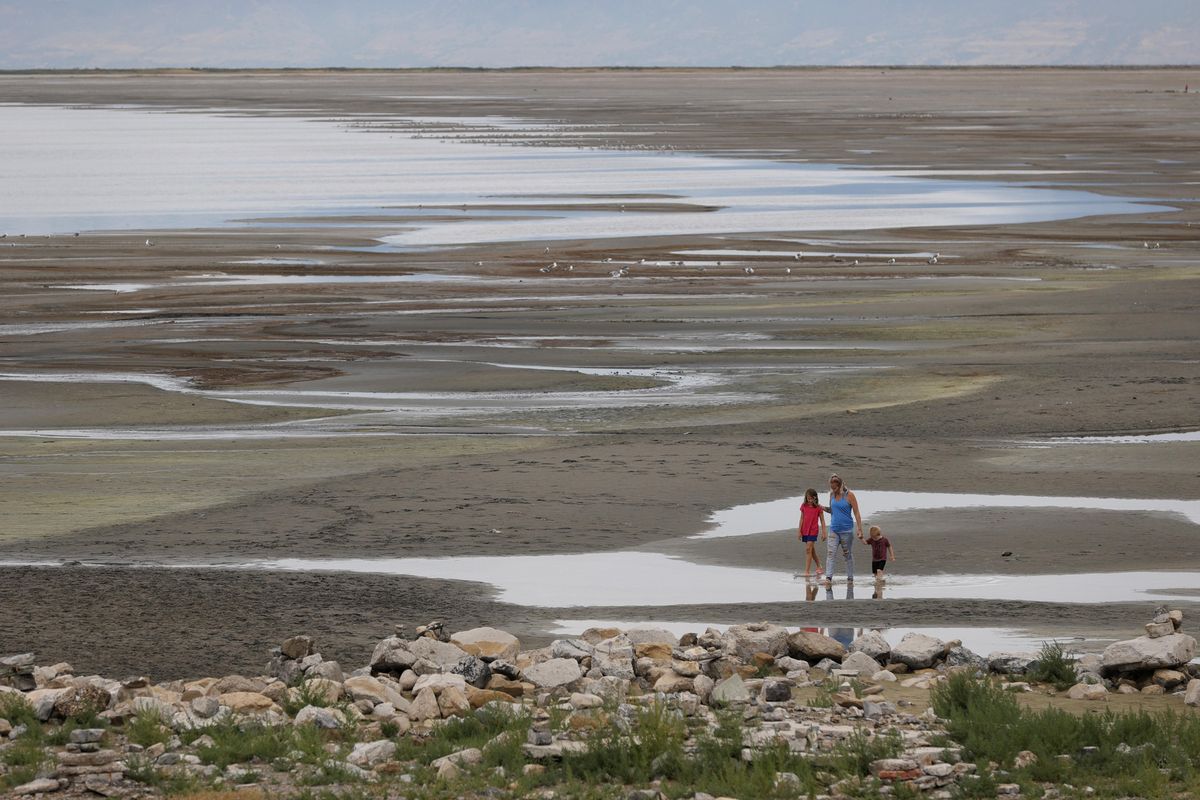
Scientists are warning Utah officials that the Great Salt Lake is shrinking far faster than experts previously believed, and calling for a major reduction in water consumption across the American West in order to prevent the lake from disappearing in the next five years.
Researchers at Brigham Young University (BYU) led more than 30 scientists from 11 universities and advocacy groups in a report released this week showing that the lake is currently at 37% of its former volume, with its rapid retreat driven by the historic drought that’s continuing across the West.
Amid the climate crisis-fueled megadrought, the continued normal consumption of water in Utah and its neighboring states has led the Great Salt Lake to lose 40 billion gallons of water per year since 2020, reducing its surface level to 10 feet below what is considered the minimum safe level.
“Goodbye, Great Salt Lake,” tweeted the Environmental Defense Fund on Friday.
\u201cGoodbye, Great Salt Lake\ud83d\udc4b Megadrought and mismanagement have cost the lake 73% of its water. Now experts are warning it could dry up in the next 5 years. And \u201cIts disappearance could cause immense damage to Utah\u2019s public health, environment, and economy\u201d\nhttps://t.co/oecZ0qQ8C0\u201d— EDF (@EDF) 1673037904Scientists previously have warned that increased average temperatures in Utah—where it is now about 4°F warmer than it was in the early 1900s—are to blame for a 9% reduction in the amount of water flowing into the lake from streams.
The authors of the BYU study are calling on Utah officials to authorize water releases from the state’s reservoirs and cut water consumption by at least a third and as much as half to allow 2.5 million acre feet of water to reach the lake and prevent the collapse of its ecosystem as well as human exposure to dangerous sediments.
“This is a crisis,” BYU ecologist Ben Abbott, a lead author of the report, told The Washington Post. “The ecosystem is on life support, [and] we need to have this emergency intervention to make sure it doesn’t disappear.”
The shrinking of the Great Salt Lake has already begun creating a new ecosystem that is toxic for the shrimp and flies that make it their habitat, due to the lack of freshwater flowing in. That has endangered millions of birds that stop at the lake as they migrate each year.
The loss of the lake may also already be exposing about 2.5 million people to sediments containing mercury, arsenic, and other toxins.
“Nanoparticles of dust have potential to cause just as much harm if they come from dry lake bed as from a tailpipe or a smokestack,” Brian Moench, president of Utah Physicians for a Healthy Environment, told the Post. Last month, Moench’s group applauded as Republican Gov. Spencer Cox’s administration, under pressure from residents, walked back its position supporting a plan to allow a magnesium company to pump water from the Great Salt Lake.
Abbott called the rapid shrinking of the lake “honestly jaw-dropping.”
“The lake’s ecosystem is not only on the edge of collapse. It is collapsing,” Abbott told CNN. “The lake is mostly lakebed right now.”
This post was originally published on Common Dreams.
-
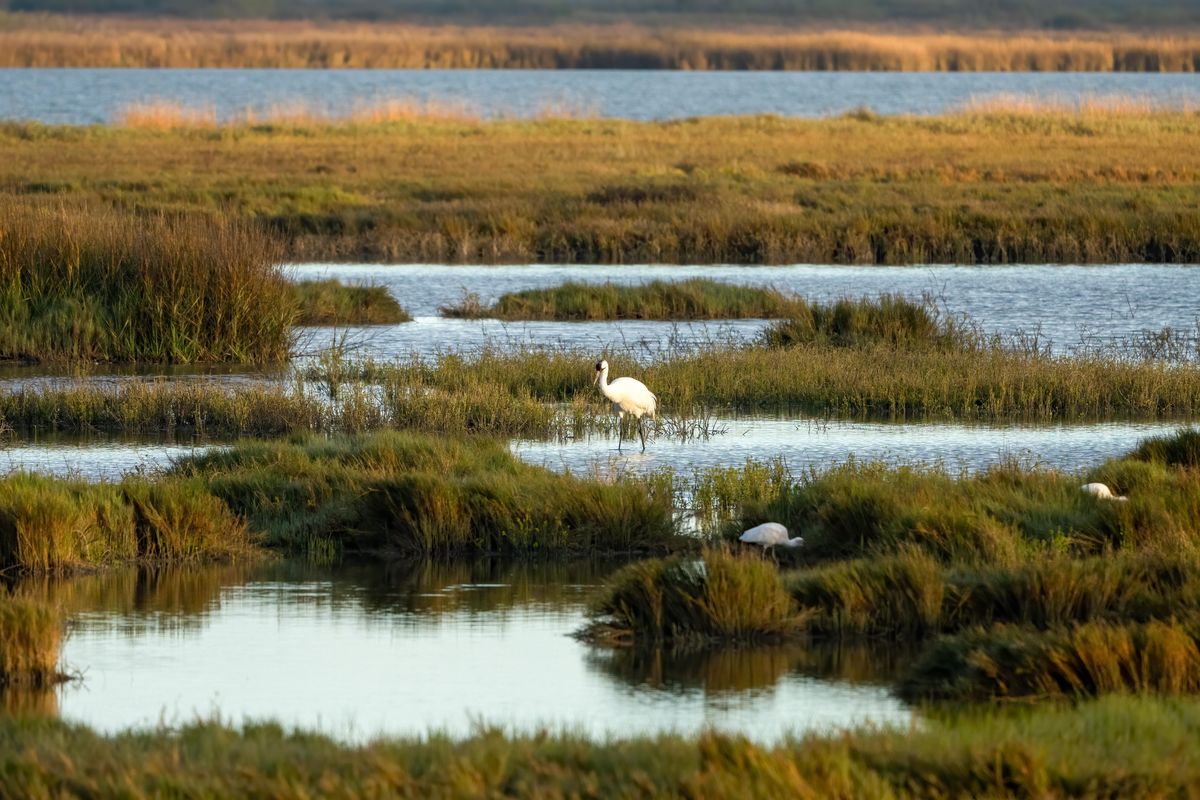
Clean water advocates on Friday applauded the Biden administration for “resoundingly” rejecting the gutted regulatory framework left by former President Donald Trump as the Environmental Protection Agency finalized a rule restoring many water protections.
Under the new regulations, the EPA will define “waters of the United States” that are protected under the Clean Water Act as “traditional navigable waters, the territorial seas, interstate waters, as well as upstream water resources that significantly affect those waters.”
“Small streams help provide drinking water to millions of Americans. Wetlands filter out pollutants, provide vital wildlife habitat, and protect our communities from flooding in a climate-changed world.”
The rule does not go as far as former President Barack Obama’s administration went in protecting bodies of water including ephemeral streams and ponds, but they will restore protections for millions of marshes and other waterways that were stripped of safeguards by the Trump administration.
The Southern Environmental Law Center (SELC), which warned in 2020 that former President Donald Trump’s rule would put “drinking water for millions of Americans at risk of contamination from unregulated pollution,” called the restored regulations “a major step forward.”
\u201cThe lakes, streams, and wetlands this rule protects ensure the health of our ecosystems and communities.\u201d— SELC (@SELC) 1672421839“As a result of our efforts, Lake Keowee in South Carolina, which provides drinking water for 400,000 people, will remain a pristine body of water,” said Kelly Moser, a senior attorney at SELC. “More than 200 wetland acres adjacent to the Savannah River National Wildlife Refuge in South Carolina will again have protections against development. And that’s just to name a couple of the many Southern waterways that will be cleaner thanks to the restored legal protections.”
The rule was announced two days before the new year in which the U.S. Supreme Court is expected to rule on Sackett v. Environmental Protection Agency, a case involving a couple in Idaho who sued the EPA after the agency ordered them to stop a construction project because the property where they were building included a federally protected wetland. The Supreme Court heard oral arguments in the case over the summer.
Kevin S. Minoli, a former EPA counsel, told The New York Times that the Biden administration could have “more room to interpret” the court’s expected decision now that it has issued its own rule regarding which waters must be protected by the federal government.
“If the Supreme Court goes first, then the agency can’t finalize a rule that goes beyond it,” Minoli told the Times.
The impending decision ensured that the EPA “could not deliver fully” on the “promise” of the Clean Water Act, said John Rumpler, senior clean water campaigns director for Environment America Research and Policy Center, as “an extreme challenge to the Clean Water Act at the Supreme Court hangs like a sword of Damocles over the agency’s head.”
“The EPA’s new rule makes progress by restoring federal protections to at least some waterways,” he said. “It officially cleans up the Trump administration’s Dirty Water Rule, which wiped out federal protections for thousands of waterways and nearly half of all wetlands across the country.”
“But securing the promise of the Clean Water Act requires us to protect all our streams and remaining wetlands from polluters,” Rumpler added. “Small streams help provide drinking water to millions of Americans. Wetlands filter out pollutants, provide vital wildlife habitat, and protect our communities from flooding in a climate-changed world.”
“We will not rest,” said Rumpler, “until we counter that looming threat and all of America’s waterways get the protection they deserve.”
This post was originally published on Common Dreams.
-
Inflation dominated news headlines and American psyches in 2022. Overall, consumer prices jumped an average 7.1 percent this year, with the cost of just about everything going up, from cars to coffee and gas to groceries. The trend triggered a bitter midterm election campaign, prompted a series of aggressive interest-rate hikes from the Federal Reserve, and fears about an impending recession.
This post was originally published on Latest – Truthout.
-
Environmental justice advocates on Friday condemned a move by a district judge in Michigan to drop two misdemeanor charges against former Republican Gov. Rick Snyder in connection with the 2014 Flint water crisis that killed dozens of residents of the predominantly Black city and poisoned thousands more. The Detroit Free Press reports Genesee County Judge F. Kay Behm signed an order remanding…
This post was originally published on Latest – Truthout.
-
A fossil fuel company was convicted of criminal charges in Pennsylvania on Wednesday, more than a decade after an early fracking operation poisoned drinking water for residents of the small town of Dimock and sparked one of the first major controversies to arise from the oil and gas boom. After years of legal wrangling, the company formerly known as Cabot Oil & Gas agreed to plead no contest to 15…
This post was originally published on Latest – Truthout.
-
From Martha F. Davis, Co-Editor. Today is the annual “Imagine a Day Without Water” Day of Action. To promote greater attention to water affordability and the human right to water for ALL, Northeastern Law School’s Program on Human Rights and…
This post was originally published on Human Rights at Home Blog.
